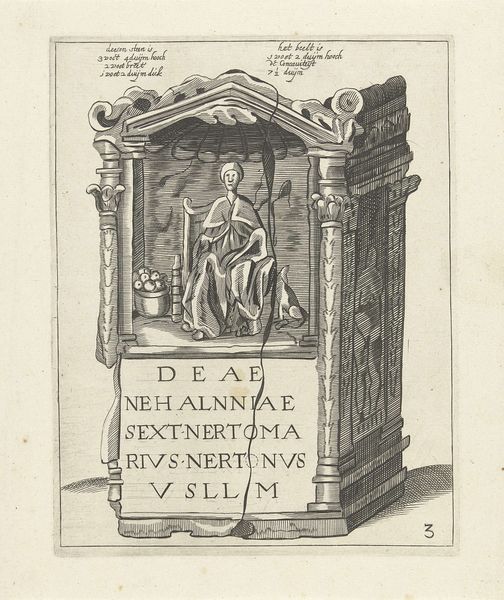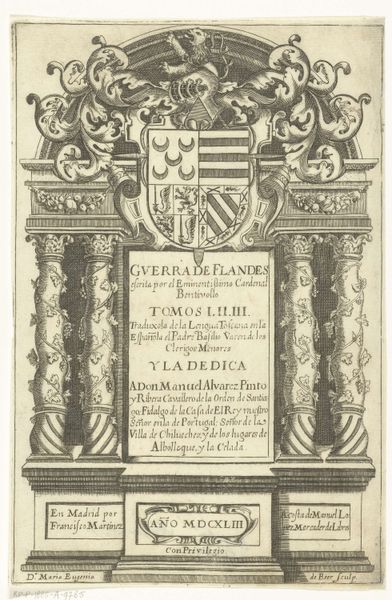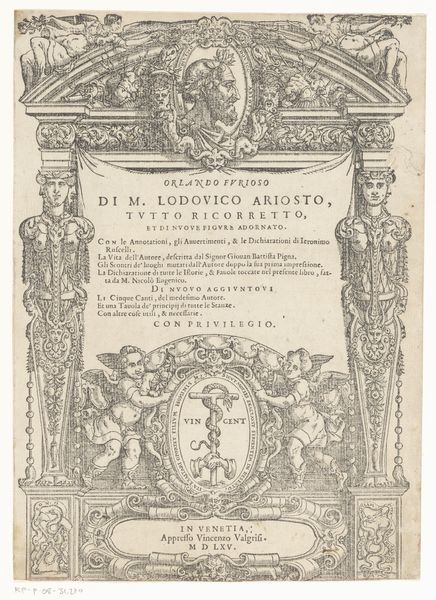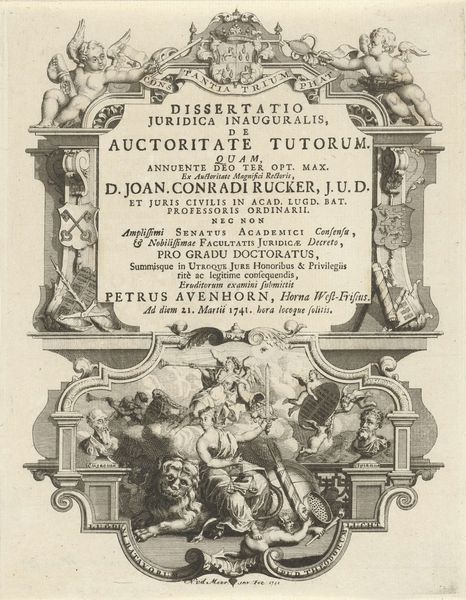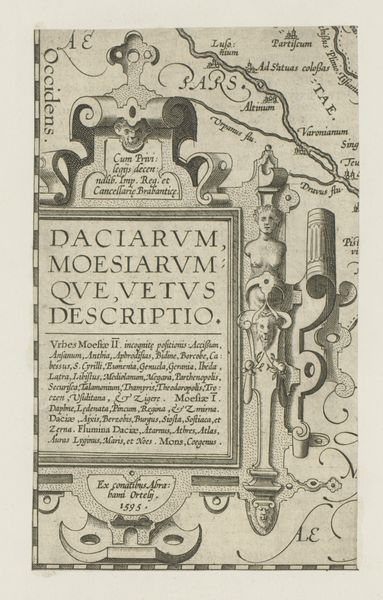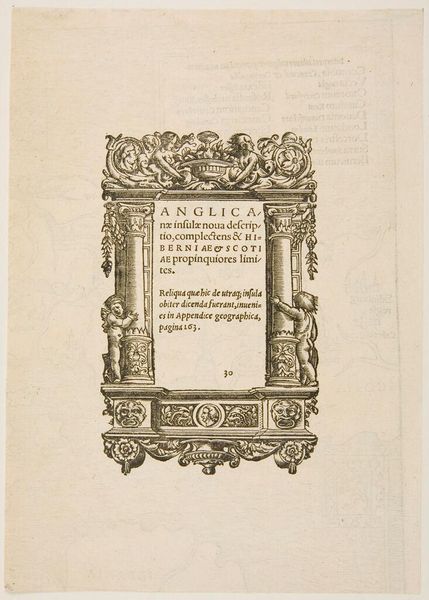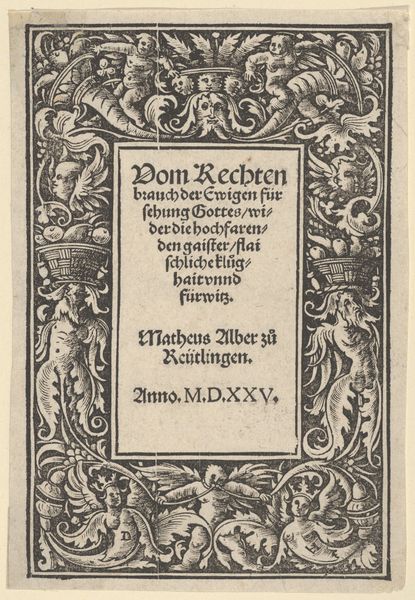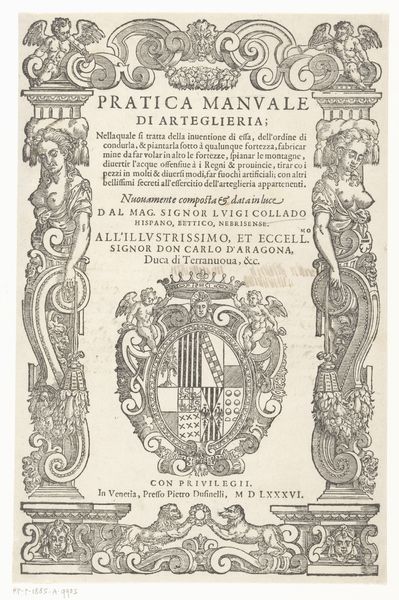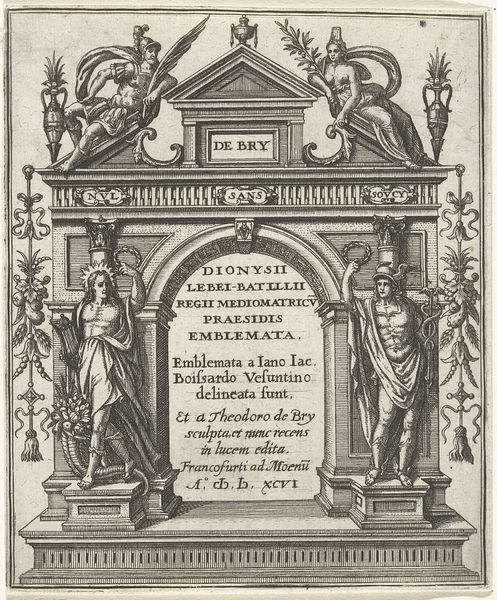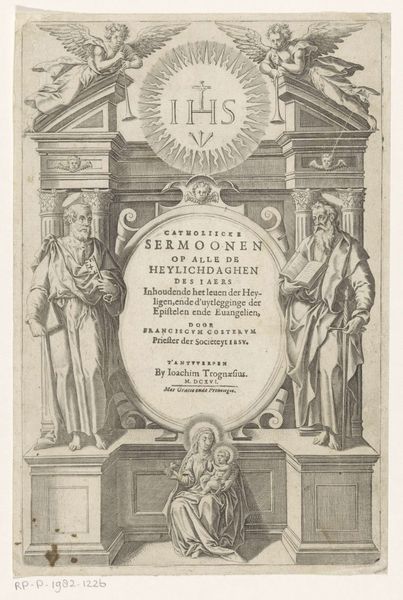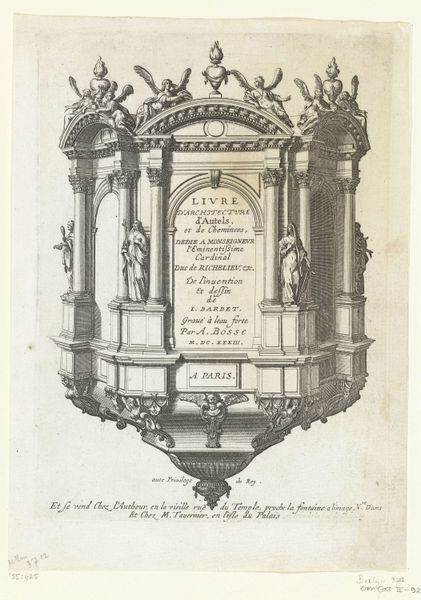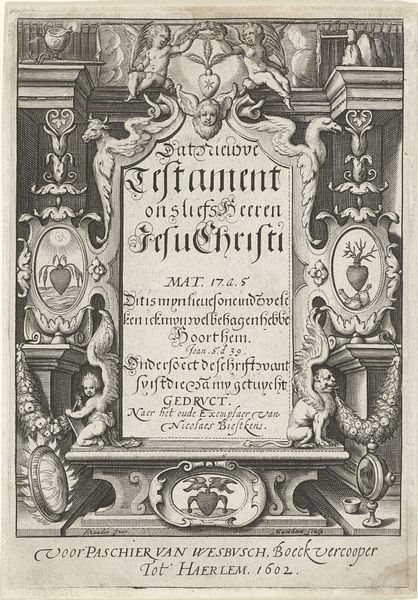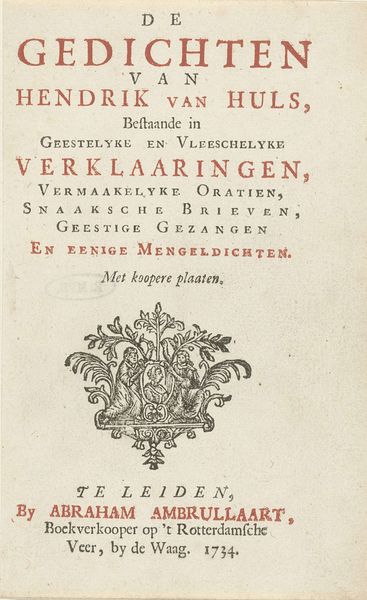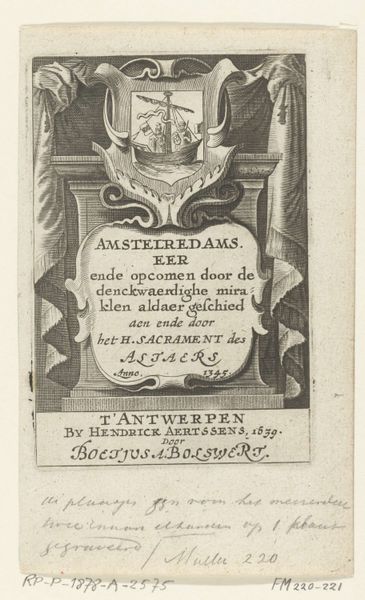
print, engraving
#
baroque
# print
#
figuration
#
text
#
pen-ink sketch
#
line
#
engraving
Dimensions: height 123 mm, width 67 mm
Copyright: Rijks Museum: Open Domain
Willem van Swanenburg created this print, "Temple with Cupid and a Jester's Cap," sometime between 1581 and 1612 using engraving, a process that demands exacting skill and precision. Lines are incised into a metal plate, and these grooves hold ink that is then transferred to paper. The crispness and clarity of the engraved lines allow for intricate detail, evident in the architectural ornamentation, the figures of Cupid and the jester, and the delicate foliage winding around the columns. This level of detail is labor-intensive, reflecting a significant investment of time and skill on the part of the artist. Engraving in this period wasn't just about aesthetics; it was a key means of reproducing and disseminating images and texts, contributing to the burgeoning print culture of the time. In this case, the image serves as a frontispiece for a book of poetry, highlighting the close relationship between artistic skill, the printed word, and the marketplace of ideas. By appreciating the material process of engraving, we recognize the labor, skill, and social context embedded in this small but intricate work.
Comments
No comments
Be the first to comment and join the conversation on the ultimate creative platform.
